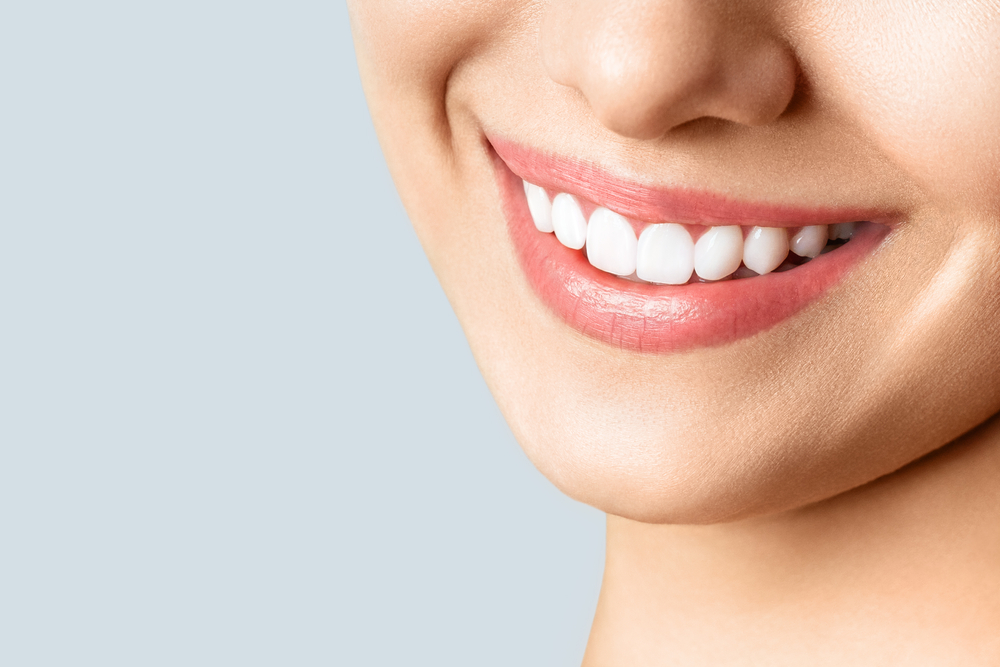Say Goodbye to Fillings Soon? Scientists Just Grew Real Human Teeth In a Lab!

What if your body could do something it forgot how to do thousands of years ago — grow a new tooth?
It might sound like science fiction, the kind of thing whispered about in futuristic films or miracle cures, but it’s becoming science fact. For decades, we’ve patched, filled, and drilled — settling for fixes that wear out and replacements that never truly become part of us. Yet beneath our gums, hidden in our DNA, there may lie an ancient blueprint — a third set of teeth waiting to be awakened.
Researchers in London and Japan are now tapping into that very possibility. In a quiet lab, scientists have not only sparked the growth of real human teeth using lab-grown cells but are also testing a medication that could coax the body to grow new teeth naturally — just like sharks and elephants do. This isn’t just a dental upgrade; it’s a biological renaissance.
The age of artificial fixes may soon give way to regeneration. And the question isn’t just how — it’s what happens when nature takes the lead again?
The Problem With Today’s Dental Solutions
Let’s be honest — when we lose a tooth today, we don’t really restore it. We replace it. And there’s a world of difference between the two.
Dental fillings, implants, and dentures have long been the standard responses to tooth loss or decay. While they’ve helped millions eat, speak, and smile again, these solutions are ultimately mechanical fixes for a biological problem. They’re stand-ins, not solutions.
Take fillings: they patch cavities but don’t stop the underlying damage. Over time, they can actually weaken the tooth’s structure, leading to further decay, sensitivity, or the need for repeated treatments. Implants, though more durable, come with their own set of complications — invasive surgery, the risk of infection or rejection, and a requirement for healthy jawbone structure. And even then, they don’t regenerate. They don’t grow with you. They don’t heal.

And for children with congenital conditions like anodontia — where adult teeth never form — these options are even more limited and more disruptive. Implants are often unsuitable for growing jaws, leaving young kids reliant on uncomfortable prosthetics that must be continually adjusted or replaced.
On top of the physical limitations, there’s an emotional toll too. Tooth loss isn’t just a dental issue. It affects confidence, social connection, even our sense of identity. Smiles are deeply personal, and knowing yours is being held together by something artificial — something fragile — can quietly chip away at your well-being.
The truth is, despite all our medical advances, dentistry has remained stuck in a cycle of repair and replacement. What it hasn’t done — until now — is regrow what was lost. That’s the turning point science is now approaching.
The Breakthrough — Growing Real Human Teeth in the Lab

For the first time in history, scientists have done something once thought impossible: they’ve grown a real human tooth outside the human body.
At King’s College London, in collaboration with Imperial College, researchers have developed a pioneering method to bioengineer teeth using living human cells. Through a specially engineered material that mimics the natural environment of early tooth development, these cells are able to “talk” to each other — sending gradual, timed signals that initiate the transformation into actual tooth-forming cells. In simpler terms, they’ve recreated the exact conditions your body uses to grow a tooth… only now, it’s happening in a lab dish.
The implications are massive. Dr. Ana Angelova-Volponi, a leading voice in regenerative dentistry, believes this could “revolutionize dental care.” And she’s not alone. The goal is no longer just to repair teeth — it’s to regenerate them. This new frontier of dentistry, known as regenerative dentistry, doesn’t rely on artificial materials or prosthetics. It relies on the body’s own blueprint for building something real.
This isn’t a minor advancement — it’s a shift from mechanics to biology, from replacement to rebirth.
And it’s not just one team on the cutting edge. Across the globe in Japan, researchers led by Dr. Katsu Takahashi are tackling the same goal from a different angle — a drug designed to unlock the body’s hidden ability to grow a third set of teeth. While the London team is growing whole teeth in lab dishes, Takahashi’s group is stimulating natural regrowth from within, targeting a specific protein that suppresses extra tooth formation. In animal trials, the results have been astonishing: mice and even ferrets began growing new teeth where there were none before.
How Tooth Regrowth Works

It begins with understanding how our teeth develop in the first place. Naturally, a tooth forms through a delicate conversation between two types of cells: the dental epithelium and the mesenchyme. These cells don’t just appear and start building a tooth. They communicate — signaling each other, step by step, to transform and organize into enamel, dentin, pulp, and root.
Scientists at King’s College London have managed to recreate this dialogue using a specially engineered material. This material mimics the body’s natural extracellular matrix, allowing cells to send signals slowly and in stages — just like in real development. Previous attempts failed because the signals were too rushed or uncoordinated. But with this new method, researchers essentially rewound the biological clock and let nature take its time — in a petri dish.
Meanwhile in Japan, Dr. Takahashi’s team is taking a different route: awakening what may already be within us. Their research centers on a protein called USAG-1, which inhibits the growth of additional teeth. By designing a medication that blocks this protein, they’ve triggered the development of new teeth in animals, including mice and ferrets. This medication, now entering human clinical trials, aims to unlock the potential for a “third set” of teeth — something once thought lost to evolution.
This concept isn’t as far-fetched as it might seem. In fact, up to one-third of people born with extra teeth — a condition called hyperdontia — may already be tapping into this latent third set. Takahashi’s work suggests that the potential is still there, dormant in our DNA, waiting for the right conditions to be activated.
Whether it’s through engineered cells or targeted medication, both approaches point to a common truth: the body has the instructions to grow teeth. We’ve just forgotten how to read them — until now.
Why This Matters — The Human Impact

From young children born with congenital conditions like anodontia, to adults who lose teeth due to injury, decay, or disease, the struggle is real and lifelong. Kids with missing adult teeth often face years of prosthetics and procedures that don’t grow with them. Adults endure painful surgeries, replacements that never quite feel like their own, and a revolving door of dental appointments just to maintain function. It’s costly, it’s uncomfortable — and it’s not truly healing.
Now imagine a child no longer needing artificial teeth that must be constantly adjusted as they grow — but instead, growing the real thing. Picture an elderly person, once resigned to implants or dentures, now offered a chance to regenerate their own living teeth. This isn’t cosmetic enhancement. It’s biological restoration.
And the psychological impact is just as profound. A smile isn’t just a set of teeth — it’s a form of confidence, a way of connecting with the world. The ability to naturally regrow a tooth could remove the quiet shame and daily frustration that so many silently carry. It’s dignity restored.
Dr. Ana Angelova-Volponi calls this potential “revolutionary,” not because it adds something artificial — but because it returns something real. Something human.
We’re entering an era where the solutions aren’t just stronger. They’re smarter, more compassionate, and deeply aligned with the body’s own design. And that kind of healing? It goes far beyond the mouth.
The Road Ahead — Possibilities and Challenges

Despite the groundbreaking progress, growing human teeth outside the body or triggering regrowth within it is still in the early stages of clinical development. Researchers have proven it’s possible in animals and in lab settings. But moving from the lab bench to the dentist’s chair requires time, rigorous testing, and absolute safety. Human biology is complex, and even promising results in mice or ferrets don’t guarantee immediate success in people.
One of the major challenges ahead lies in delivery: How do we get these lab-grown teeth into a human mouth in a way that’s safe, effective, and lasting? Scientists are exploring two main options. One is to transplant young tooth-forming cells into the jaw, allowing them to grow and integrate naturally. The other is to fully grow the tooth in the lab, then implant it surgically. Both paths require precision, early-stage growth control, and a deep understanding of tissue compatibility.
On the pharmaceutical front, Dr. Takahashi’s tooth-regrowth medication is entering human clinical trials, with hopes of public availability by 2030. But success here hinges on more than scientific results — it demands regulatory approval, long-term safety validation, and global infrastructure to bring such treatments into everyday clinics.
And let’s not forget access. Who will benefit from these innovations? Will they be affordable and widely available, or reserved for those who can pay a premium? Will dentists be trained to implement this technology effectively? The future of regenerative dentistry doesn’t just rest on biology — it rests on systems, ethics, and education.
Still, there’s reason for hope. What was once the realm of science fiction is now being tested in real-world trials. With each study, each tooth bud, and each successful signal sent between cells, we move closer to rewriting what’s possible in medicine — not just treating loss, but undoing it.
Bigger Picture — Regeneration and the Future of Medicine

What’s unfolding in dental science is part of a much larger shift — a quiet revolution in how we think about healing. For generations, medicine has been reactive: repair the damage, mask the symptoms, replace what’s been lost. But regeneration changes that equation. It doesn’t just fix — it restores. It taps into the body’s original blueprint, reigniting the instructions it once used to build itself.
Tooth regrowth is a symbol of this shift — small in size, but massive in meaning.
If we can regenerate a human tooth, what else might we awaken? What other so-called “lost functions” might we rediscover? Could we coax the heart to rebuild after failure? Help damaged spinal tissue reconnect? Replace worn cartilage, failing organs, or even restore lost vision — not with machinery or drugs, but with biology itself?
The success of lab-grown teeth and regenerative medication hints at a deeper truth: our bodies carry untold potential. Locked away in genes, silenced by time or evolution, are capacities we are only beginning to understand. And through careful science, driven by compassion and curiosity, we are learning to speak the language of healing again.
But with such power comes responsibility. Regenerative medicine must be guided not only by what can be done, but by what should be done — grounded in ethics, accessibility, and equity. It’s not enough to reach the future. We must ensure it’s a future that includes everyone.
Tooth regeneration isn’t just a story about dentistry. It’s a signpost — pointing us toward a new kind of medicine. One that restores what’s real, honors the body’s design, and gives us something we’ve long been missing: hope that healing doesn’t have to come from the outside in… but from the inside out.
A Call to Wonder — And to Readiness
What if healing didn’t feel like patchwork, but like rebirth?
That’s the question this breakthrough invites us to sit with. The idea that one day, instead of choosing between a filling or an implant, your dentist might offer you a third option: your own body, rebuilding itself. No foreign materials. No artificial substitutes. Just real, living tissue — your tooth, returned.
But this isn’t just about science. It’s about reclaiming something deeply human. A reminder that our bodies carry ancient wisdom, and that the more we learn to listen, the more we discover what’s been quietly waiting to reawaken.
Still, wonder must walk alongside responsibility. This technology won’t change the world overnight. It will take years of trials, oversight, and care to move from breakthrough to routine treatment. But the direction is clear: away from mechanical fixes and toward natural restoration.
So here’s the real invitation: to stay curious, stay informed, and stay hopeful. The next generation of healing won’t come in silver fillings or titanium screws. It will come in the form of biology remembering itself — and in the courage of those willing to believe that even lost things can grow again.
Loading...

